As President Barack Obama stepped up to Air Force One for the first time, he greeted the pilot and exclaimed “I gotta say you’re out of Central Casting. You’re exactly what I want the pilot of Air Force One to look like.”
The phrase ‘from Central Casting’ has become a kind of cultural shorthand for a stereotype or archetype, a subject so visually suited to its part it appears to have been designed for that role. Search the news for ‘straight out of Central Casting’ and you will find examples referring to athletes, executives, politicians, and philanthropists.
Not everyone who uses the reference realizes that there is an actual Central Casting, located in Burbank, California (with additional offices in New York and New Orleans). Nor do most people realize that this company is the single biggest source of extras for Hollywood productions.

Turn up at their office building early on any Monday, Wednesday, or Friday, and you will see a line of people queued up to be added to Central Casting’s database of background actors. Many will have been waiting since three or four o’clock in the morning.
They are not there for auditions, but to be catalogued and (hopefully) contacted at a later date for non-speaking roles. Then, if they are very lucky, a director or producer might give them a line. Just like how John Wayne, and Marilyn Monroe, and Brad Pitt got started.
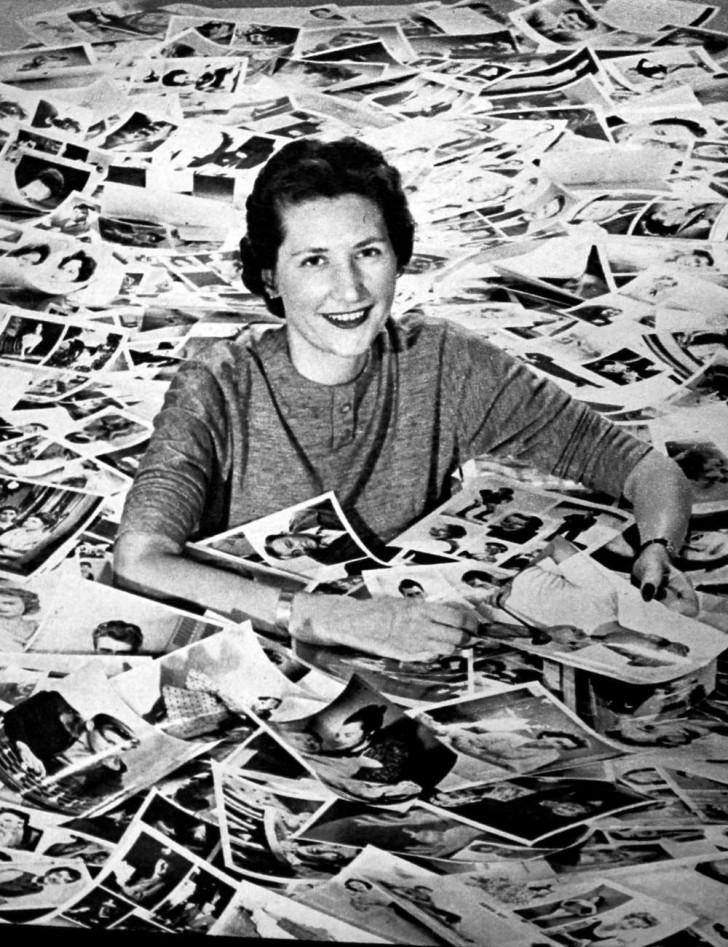
The movie extra dates back to the earliest days of cinema. These days, movie extras are known in the industry as “background actors.” Novelist and journalist Theodore Dreiser called these silent scene-creating characters “atmospherians.”
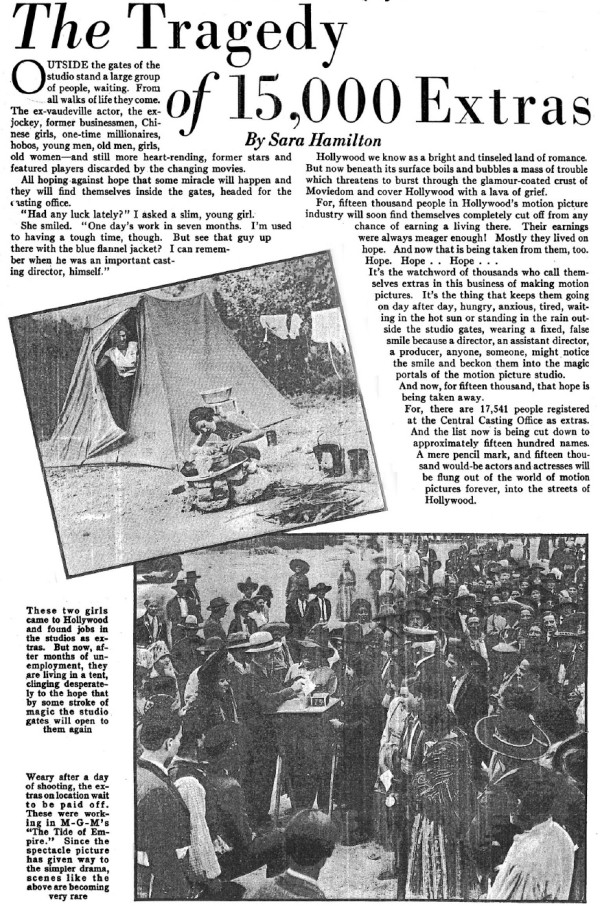
In the early 1900s, extras were often exploited and abused. By 1925, the State of California had begun threatening to investigate Hollywood over their treatment of extras—so the Motion Pictures Association of America (MPAA) responded by creating Central Casting.
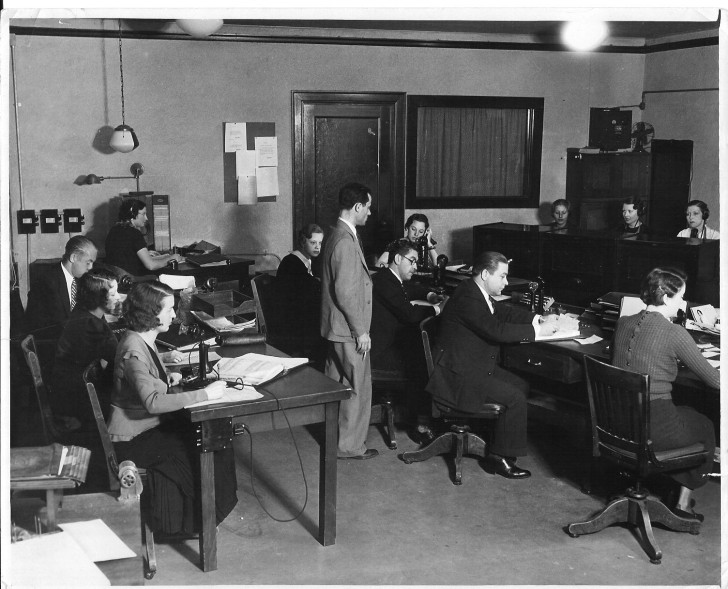
Today, Central Casting is responsible for a database of about 100,000 extras. It draws on this massive index for everything from photo doubles and stand-ins to restaurant patrons and circus acts. Extras can be found by searching for physical traits and abilities, including shoe size, bust size, limbs missing and tattoos (both general presence and specific location).
In virtually any other industry, this kind of typecasting would be frowned upon (if not downright illegal), and it can still at times be controversial. A typical (and real) example of a public casting call: “looking for hip, attractive men and women that appear to be ASIAN in their 20s with trendy wardrobe. No visible tattoos.”
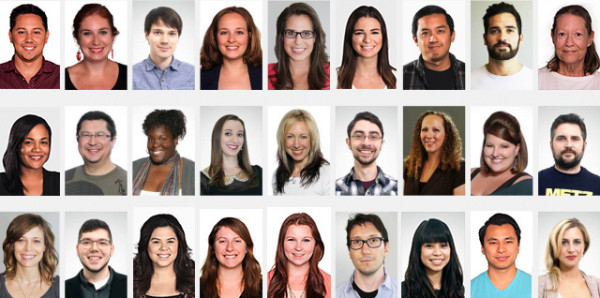
Casting directors populate backgrounds with the kinds of people they would expect to find there. Whether their choices reflect reality, or simply what they think a director (or audience) expects, is up for debate.
Background casting is about designing for invisibility; the real key is not to show off these actors but to keep them from being too obvious and thus distracting. The more the scene matches the audience expectations of a place, the more they will remain focused on the foreground action.
There’s a cynicism one could take about this operation, but there is an undeniable fairness about Central Casting. Here, everyone has a potential role to play. All who get in line early enough will be seen, cataloged and perhaps called for a suitable part.
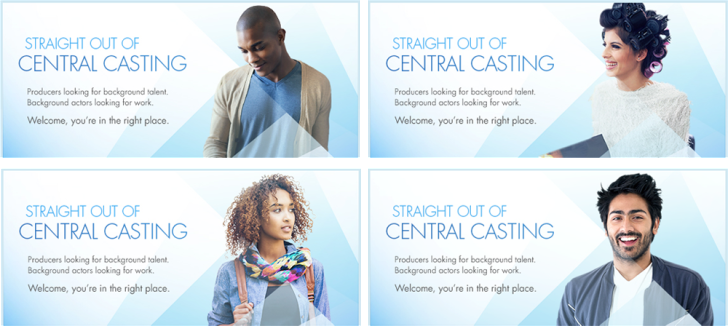
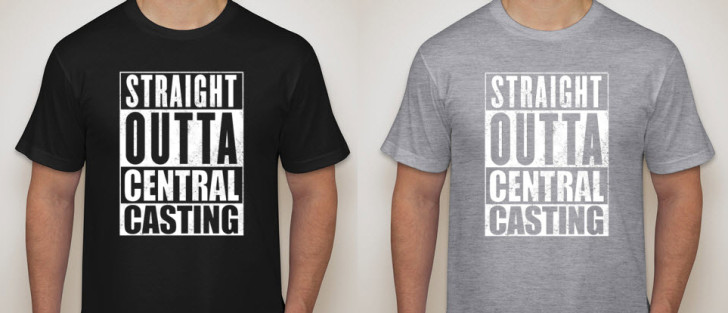



Comments (10)
Share
Hey Roman!
I love the new episode and the challenge coin is awesome. Is there any way you would be willing to explain what all of the symbols on the coin are? I definitely recognize most of them from previous episodes but even though I’ve listened to all of them, I can’t seem to place every single one. It would be nice to have an explanation enclosed with the coin at the very least for why you picked each symbol and what episodes they reference. Would you consider it?
Great idea! We updated the new post with a list of links to all of the challenge coin symbol episodes (very end of this announcement http://99percentinvisible.org/news/radiotopia-forever/ )
Where did you get that top picture? There is so much going on with it. There is a wonderful representation of the diversity of American, but then it is also a very interesting comment to show the traditional, white male controlling things from the power-side of the counter. Is it a Rockwell?
Where can i find the music from this episode? I recognize a song in it but can’t put my finger on the name.
Dream a Little Dream of Me (Mama Cass) and there’s also Plink Plank Plunk in the background playing in the middle – if you meant that :D haha
The version of Dream a Little Dream in this episode is by Doris Day. https://www.youtube.com/watch?v=h7j8wa9sWOE
Yeah what is it that is playing in the background at the very beginning?
“…for American Crime Story…” aaah :D Can’t wait that show.
Fun show! FYI, ACME anvils were real, and the company still exists. Wile E Coyote was actually ordering from…Sears Roebuck and Co! “ACME” was the in-house brand for some of Sears’ tools in the early 1900s, including blacksmithing equipment. Here’s a link to a picture of one of their old ads: http://acme.com/calendar/images/anvil_ad.gif
Sorry I’m just now seeing this, but thanks for watching/listening to the show!
That’s awesome that ACME anvils are real. New trivia fact of the week!